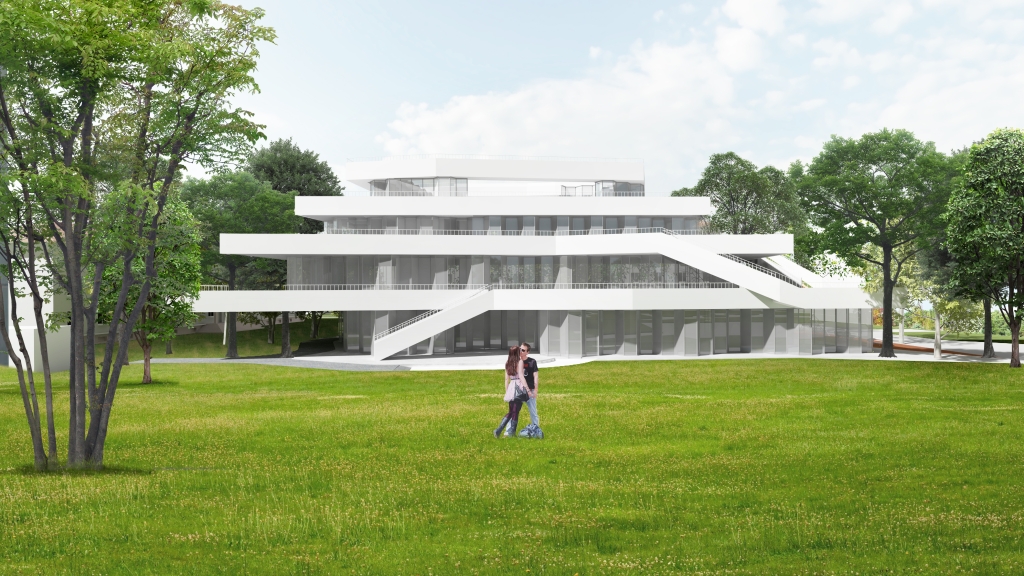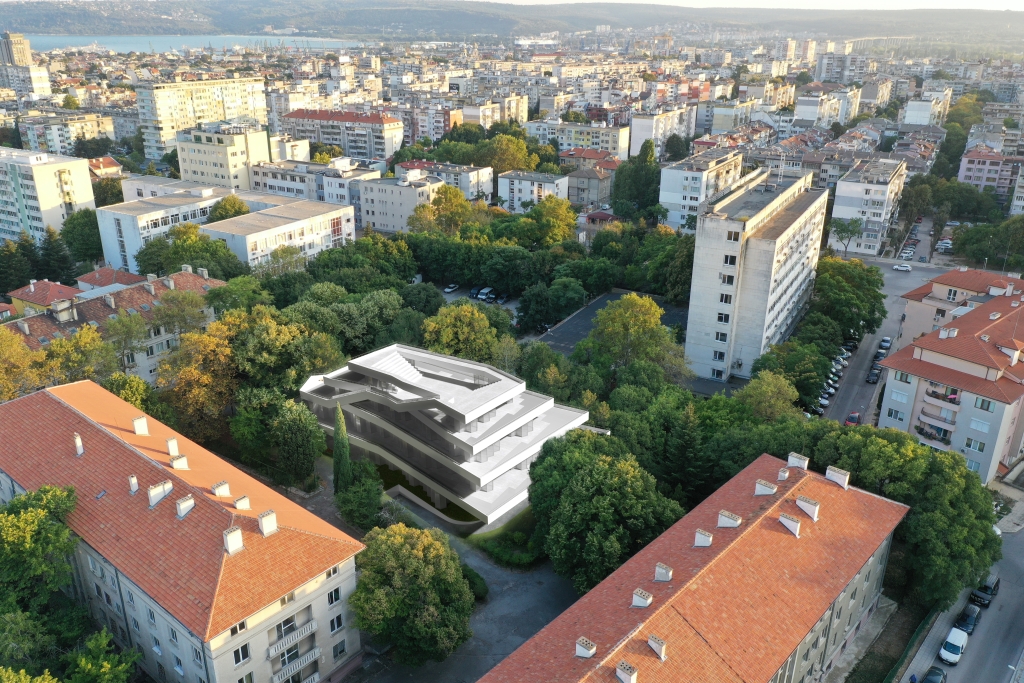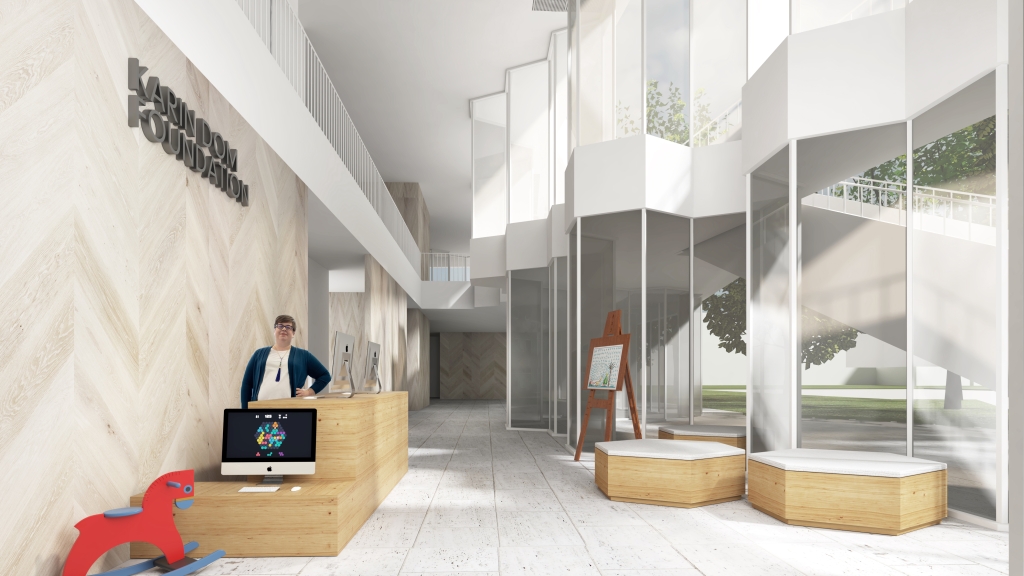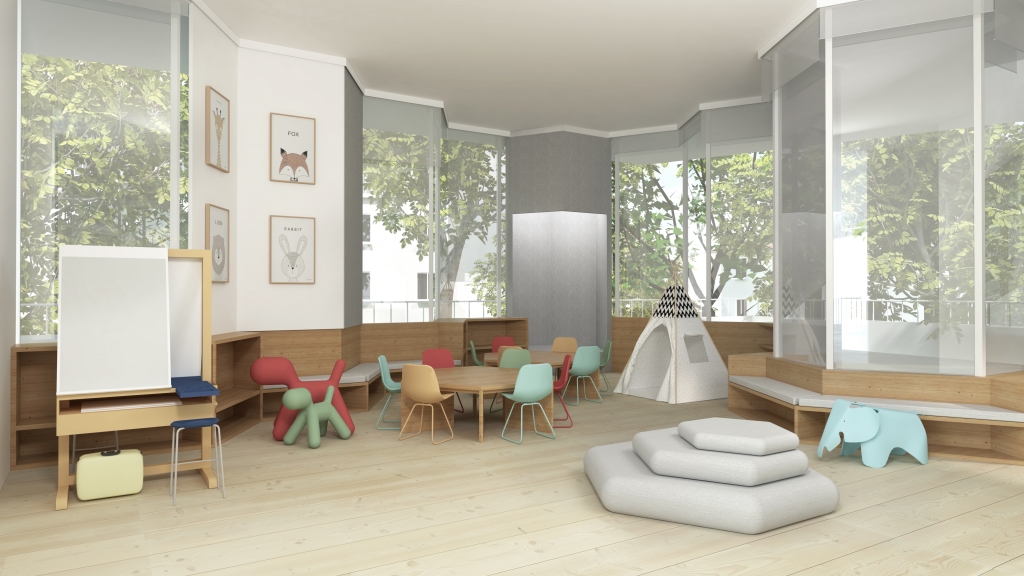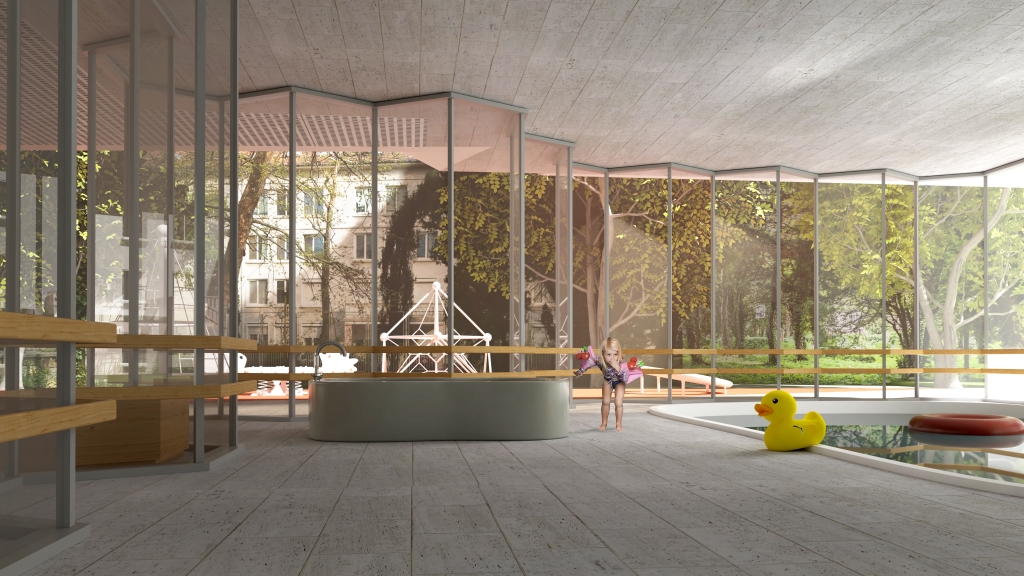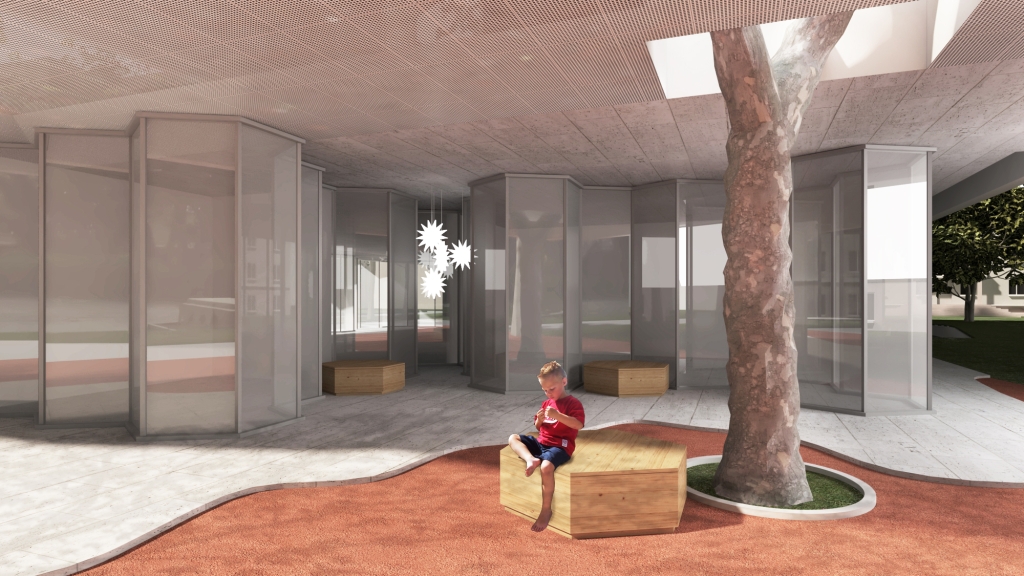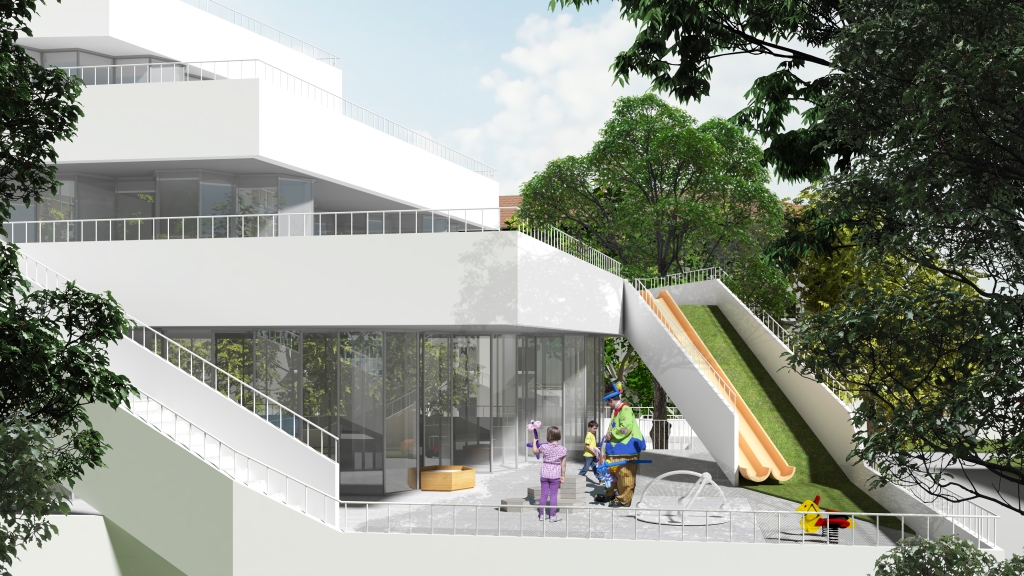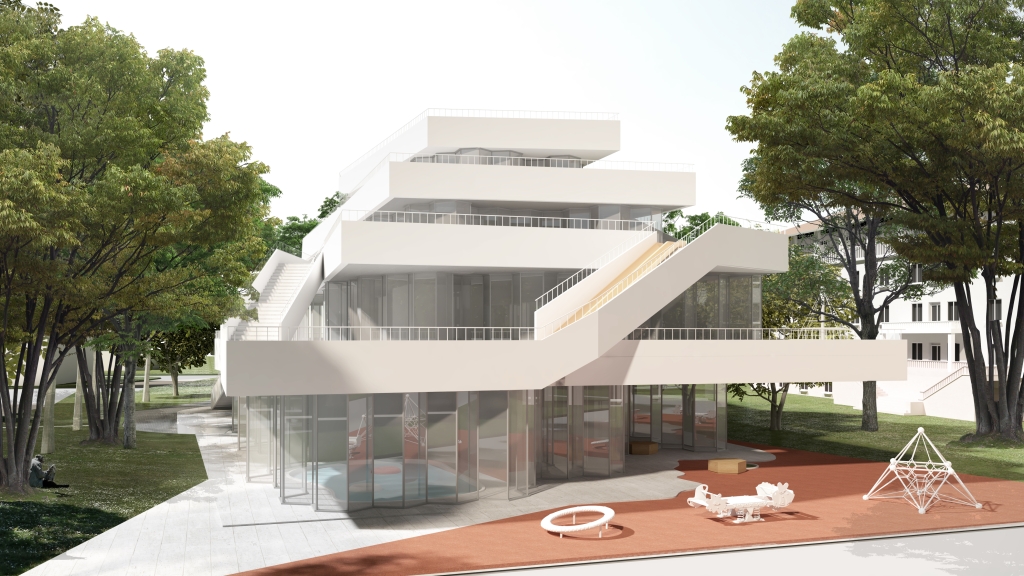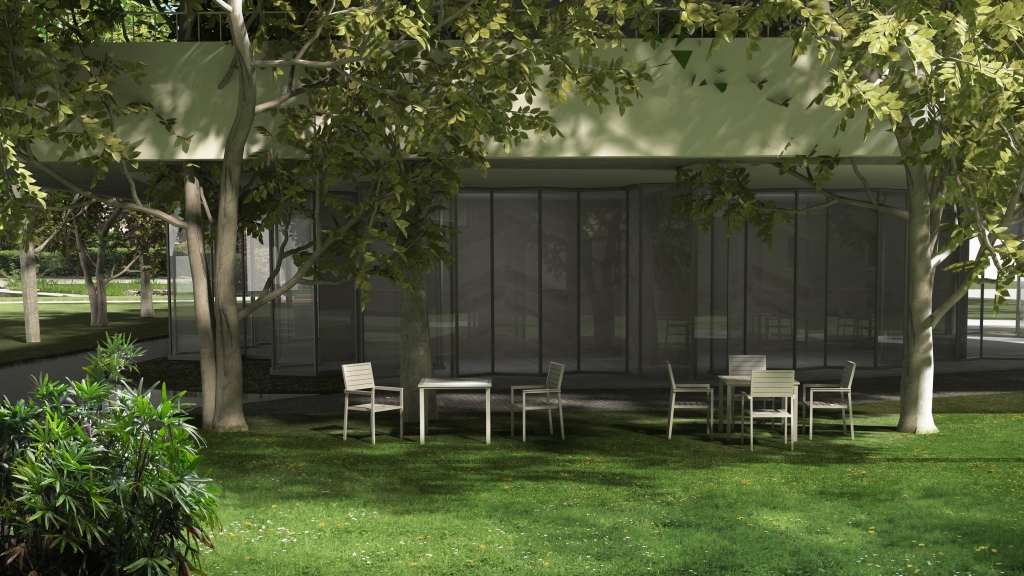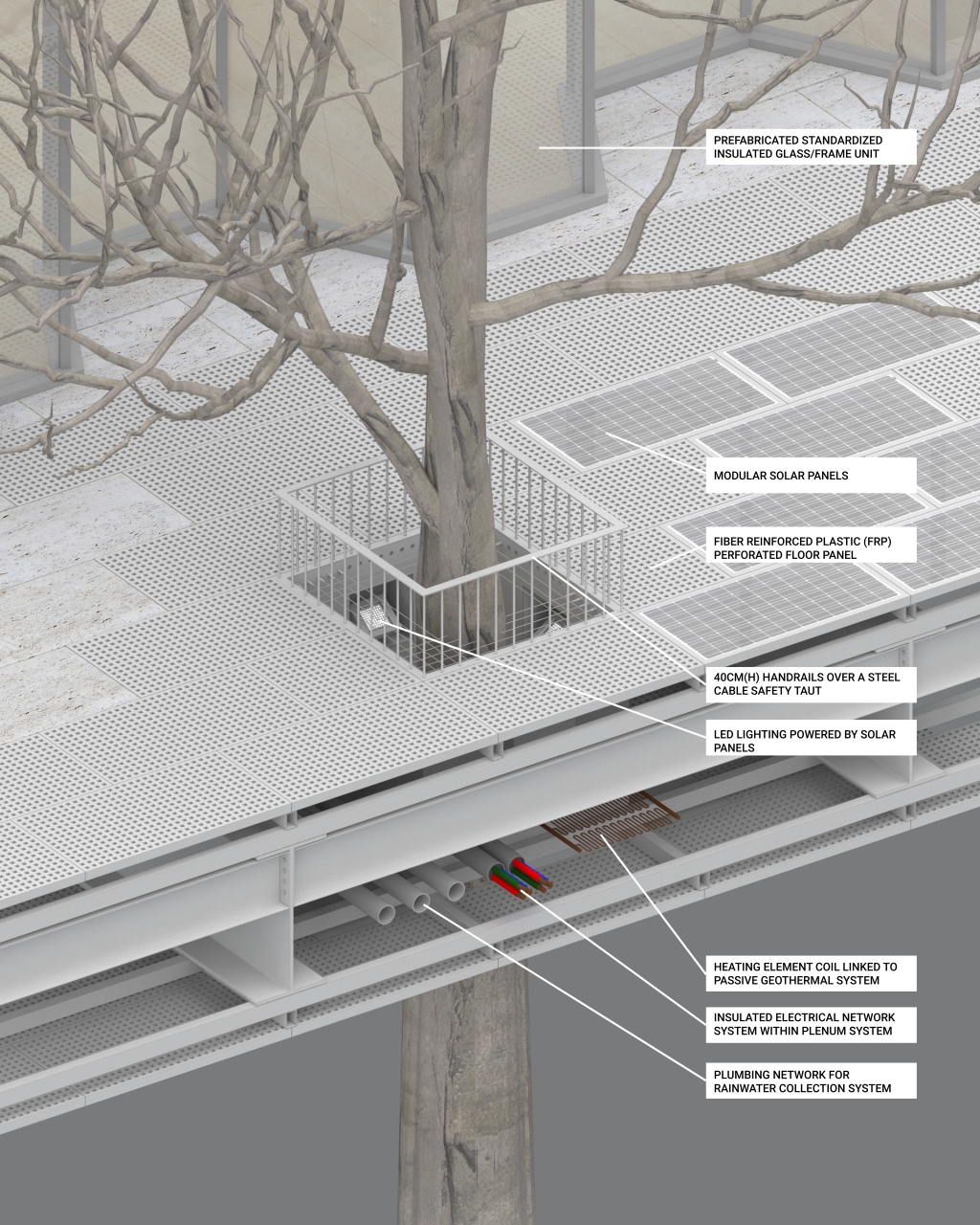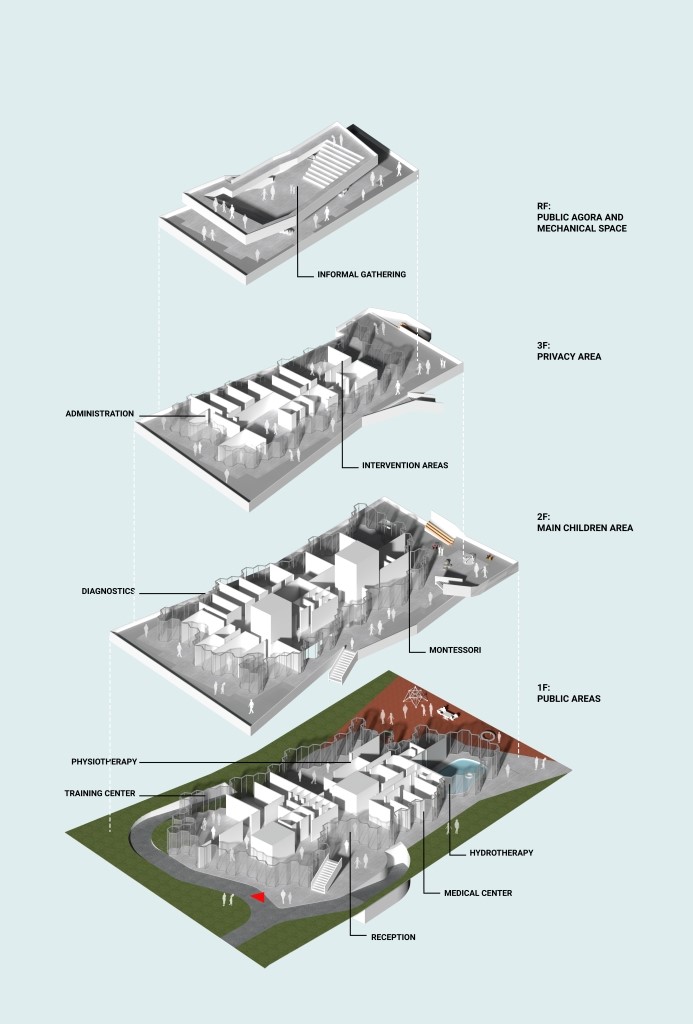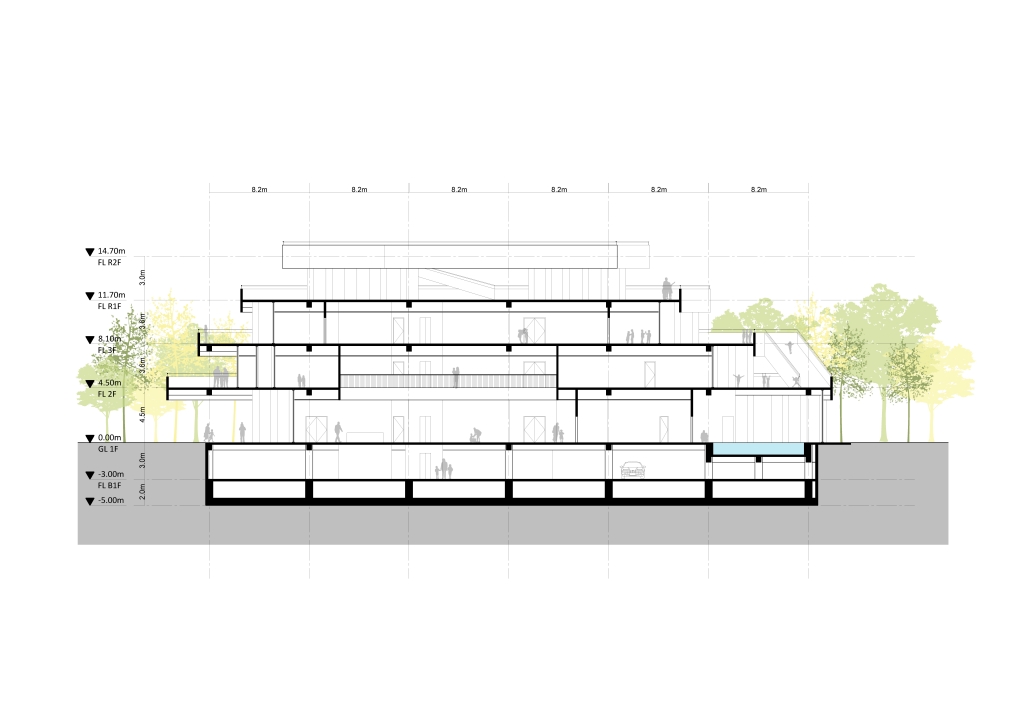Karin Dom Foundation Center for Children with Special Needs
Karin Dom Foundation Center for Children with Special Needs
Architecture for Humanity
The project deals directly with two seemingly disparate concerns: the creation of a building that is in harmony with its excellent surroundings, and the highly specific needs of special-education children. The reality is that these two issues are not separate, but in a deep symbiotic relationship with one another. Can the architecture be an environment for healing, learning, and growth? Can it also be a home for these special children where they can feel included and loved?
Our approach adheres to the following premises:
- The site consists of a large park-like area occupied by many beautifully matured trees. Apparently left to its own organic growth, it has become an oasis of ecological diversity, unadulterated by unchecked occupancy.
- It would be a colossal loss if the trees and land were completely cleared to make way for a new building. A building indifferent to its context can never be a good building, particularly on this site.
- The opposite approach would be to ask: what if we minimize the loss of trees, and instead use their physical presence to generate the building? Shaped by the avoidance of trees, the building is in defiance of conservative architectural norms, and in deference to its ecological environment.
- The multistory building creates an opportunity to bring the children closer to the foliage of the trees, something they would otherwise not have the opportunity to. The enlarged balconies act as platforms for the children to play amongst this unique series of microclimate environments.
This will serve as a model for responsive architectural design, not just for Bulgaria and Europe, but also for the inhabitants of the world.
Context and Surroundings
In order to minimize the impact of the building towards the trees, the architecture is kept simple and defined by the placement and the height of trees. Of the 62 original trees on the plot, 32 were preserved and highlighted by the architecture. Each floor’s perimeter is given a deep overhang/balcony terrace that reaches out as far as possible to the adjacent trees. They either bend around the tree or allow the tree to penetrate the terraces. This allows the children to approach the trees in a safe and intimate manner, protected by appropriate guardrails and non-slip surfaces.
Function and Program
The building functions are organized in a clear and direct manner. All public functions and those that require their own autonomous entrances are located on the 1st Floor. They are accessible from a common reception area to ensure constant indirect surveillance by the receptionist. The diagnostics and Montessori areas are on the 2nd Floor as they will be high-traffic areas that require easy access to the ground floor functions. A double-height space at the reception creates visual and physical continuity between these spaces. The 3rd Floor is defined by a higher degree of privacy for the administration and intervention clinic. The Roof area is a publicly accessible but controlled area for informal programs and gatherings. Some areas are allocated for mechanical equipment. All areas can be easily partitioned and controlled to the public.
Sustainability
We take a holistic approach in designing the building to meet sustainability objectives. Instead of highlighting a single marquee “green” product or high-end product, we distributed the energy savings approach into two categories: simple technologies that are low/no maintenance and durable, and passive systems that consume zero energy. The first employs solar panel modules and geothermal systems that run on close-looped circulation of water. The extensive roof is also designed to capture rainwater runoff to be stored for landscape sprinkler use. The second relies on careful planning and intelligent use of deep overhangs that provide shading and filtered light. Its design also ensures minimized destruction of trees and soil displacement. The steel structure ensures a building that is 99% recyclable and the use of certified green building materials like bamboo flooring, recycled Fiber-Reinforced Plastic (FRP) outdoor flooring, cellulose fiber acoustic panels, and others. This ensures the long-term efficacy of the building’s sustainability goals.
Design
The deep overhangs are complemented by large windows for panoramic views of the foliage. While the children are particularly sensitive to strong sunlight, this is mitigated by the deep overhang balconies. The balconies are laid with perforated and lightweight FRP panels that filter diffused light to the floor below. This controls glare and brightness into the interior spaces, but also emphasizes the lightness and feeling of being close to nature. The prefabricated insulated-window panels consist of a single width type, and its faceted, undulating design creates a play between shadows and reflections.
The interior design features full accessibility for disabled users via universal design principles. All rooms have simple layouts with clear directionality from the elevator core. This central-core layout is designed in such a way that all staff will always be close to the children’s area in case of emergencies. In addition to good acoustics in all rooms and corridors, the textural contrasts create a comfortable environment for the visual and auditory senses. The softness of the linear interior walls is contrasted by the faceted glass towards the exterior, and this provides orientation and wayfinding to the visually impaired who rely heavily on touch. The design calls for soft pastel colors for accessories and furniture, and natural materials with soft hues for interior walls, ceiling, and floors. The loose furniture and dry-construction partitions ensure a flexible layout concept and continuous possibilities for future customization.
-
Client
Karin Dom Foundation
-
Location:
Varna, Bulgaria
-
Year:
2020
-
Size:
1,827 m2
-
Status:
Competition
Share project
